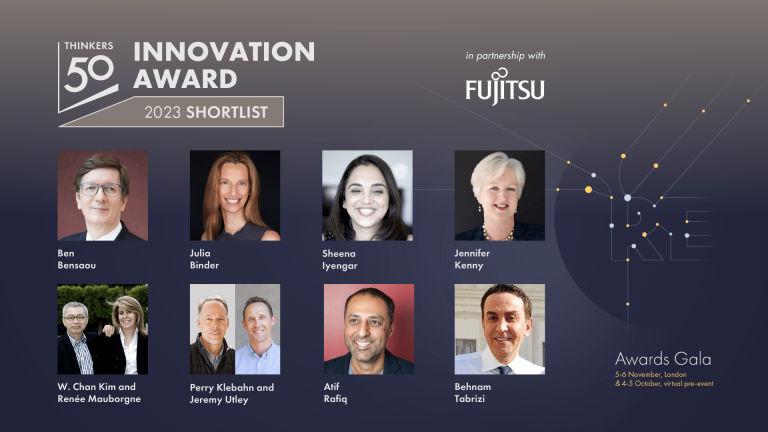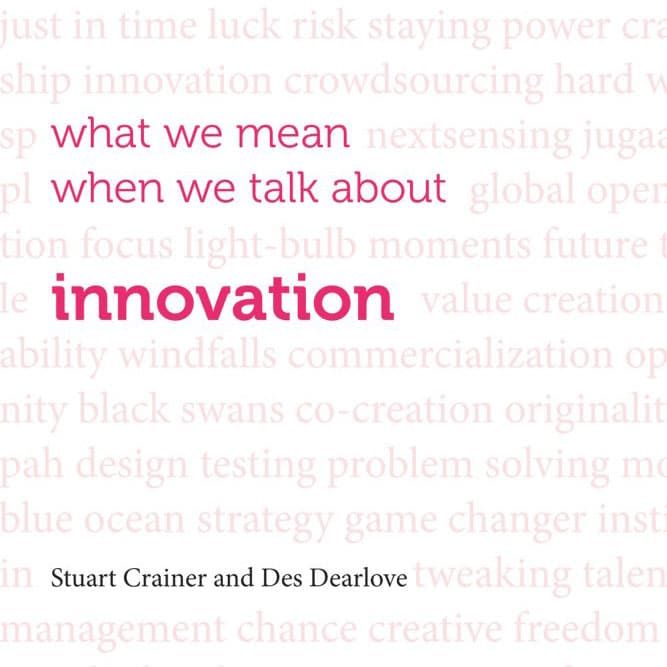

There is something ironic in the fact that the dominant intellectual force behind thinking about innovation in recent years has been a quietly spoken professor in a neat suit based at Harvard Business School. Even more ironically, his big idea is concerned with disruption.
When you meet Clay Christensen smart ass thoughts about irony quickly disappear. Christensen, an imposingly tall man, also possesses an imposing intellect and look-you-in-the-eye charisma. He is a man who patently cares about making the world a better place. “If all I leave the world is a bunch of books, I won’t have changed much,” he told us.
Christensen’s big idea is disruptive innovation. Since the idea became popular, its meaning has been stretched and distorted. Christensen is plainly irritated by much of what appears under the banner he created. For Christensen, disruptive innovation has a precise meaning rather than being a catch-all phrase covering every exciting innovation of recent times.
“Disruptive innovation has a very specific meaning,” he said when we met in his Harvard Business School office. “It is not a breakthrough innovation that makes good products a lot better. It has a very specific definition, and that is that it transforms a product that historically was so expensive and complicated that only a few people with a lot of money and a lot of skill had access to it. A disruptive innovation makes the product so much more affordable and acceptable that a much larger population has access to it.”
At the heart of disruptive innovation is nothing short of the democratization of a technology. “That’s exactly right,” Christensen responded. “And so it creates new markets. But the technology leaders who made the complicated, expensive stuff find it very hard to move in the direction of affordable and simple because that is incompatible with their business model. And so it’s almost a paradox within itself. But what it says is, if you’re a little boy and you want to kill a giant, the way you do it is by going after this kind of product, where the leader is actually motivated to walk away from you rather than engage you.”
Over recent years, Christensen and his concept have come under some vituperative and concerted criticism – from within Harvard and elsewhere. For a decent and honorable man, some of this has been distressingly personal.
Truth be told, the term is over-used. But that is not the fault of Clay Christensen who has, as we have seen, a very clear definition of what disruptive innovation is. He is also open to constructive criticism. In his office there is a sign “Anomalies welcomed”.
An interesting perspective on the furore surrounding the concept comes from Alf Rehn, one of the most interesting people of the many currently contemplating how innovation works. “What this shows is that while we’ve become very comfortable with using the word ‘disruption’, this hasn’t necessarily translated into an understanding of how disruption works, nor what is required to truly be a disruptor. Further, we need to be aware of the fact that disruption is not necessarily a model to be emulated, but rather a lesson to be learned!” says Rehn with characteristic gusto.
Rehn suggests that we need to learn a number of lessons to make practical sense of disruptive innovation.
The first is that disruption is an umbrella, not a scalpel. Says Rehn: “The key reason disruption has become so popular a concept is because it can refer to a great many things, some of them quite dissimilar. While initially used to explain a specific kind of technological disequilibria, it has been used, even by Christensen himself, to describe changes in education, healthcare, or even shifts in demographics or geo-political power. This could be seen as proof positive that the term has become devoid of explanatory power, but might also be seen as a kind of meta-validation of the insistence in the original theory that change in a market or industry often emerges from unexpected directions. The lesson theories of disruption might be trying to teach us, then, is that we shouldn’t imagine disruption to come in easily discernible guises, or remain the same. Hunting for the next “Uber for X” is then to act against theories of disruption, as this works from the idea that disruption can have a formula.”
Rehn goes onto argue that we need to separate the disruption from the disruptive agent. He points to Uber, which he labels as one of the contemporary poster-boys of disruptive innovation. “It has, as a company, been highly disruptive to the entrenched taxi industry, and as its valuation reaches ever more ridiculous heights seems to prove the power inherent in doing so. But what was the disruption, really? On one level, Uber merely leveraged existing technologies – the mobile internet and the notion of a sharing economy – in a traditional industry, if with some aplomb. In fact, precious little of what Uber achieved would have been possible had not the existing players (i.e. taxi companies and associated institutions) been so traditional in their outlook and work practices. The lesson we might take away from this, then, is that disruption might not be so much the genius work of the upstart or the startup, but rather something akin to a chemical reaction. Just as a fire cannot start from a spark alone, but requires flammable material to be present, you never disrupt in a vacuum.”
The reality is that disruption is not an end point, a glorious industry-changing full stop. As business thinkers and practitioners have experienced throughout business history, victory is short lived. Today’s disruptor is tomorrow’s change resistant organization. Disruption is only human after all.
Resources
Clay Christensen, The Innovator’s Dilemma, Harvard Business Review Press, 2013
Clay Christensen, The Innovator’s Solution (with Michael Raynor), Harvard Business Review Press, 2013
Alf Rehn, Dangerous Ideas, Marshall Cavendish, 2011.
www.alfrehn.com
This was originally published in What we mean when we talk about innovation by Stuart Crainer and Des Dearlove (Infinite Ideas, 2016).

Thinkers50 Limited
The Studio
Highfield Lane
Wargrave RG10 8PZ
United Kingdom

Thinkers50 Limited
The Studio
Highfield Lane
Wargrave RG10 8PZ
United Kingdom

| Cookie | Duration | Description |
|---|---|---|
| LANG | 9 hours | Linkedin set this cookie to set user's preferred language. |
| nsid | session | This cookie is set by the provider PayPal to enable the PayPal payment service in the website. |
| sp_landing | 1 day | The sp_landing is set by Spotify to implement audio content from Spotify on the website and also registers information on user interaction related to the audio content. |
| sp_t | 1 year | The sp_t cookie is set by Spotify to implement audio content from Spotify on the website and also registers information on user interaction related to the audio content. |
| tsrce | 3 days | PayPal sets this cookie to enable the PayPal payment service in the website. |
| x-pp-s | session | PayPal sets this cookie to process payments on the site. |
| __cf_bm | 30 minutes | This cookie, set by Cloudflare, is used to support Cloudflare Bot Management. |
| Cookie | Duration | Description |
|---|---|---|
| l7_az | 30 minutes | This cookie is necessary for the PayPal login-function on the website. |
| Cookie | Duration | Description |
|---|---|---|
| CONSENT | 2 years | YouTube sets this cookie via embedded youtube-videos and registers anonymous statistical data. |
| _ga | 2 years | The _ga cookie, installed by Google Analytics, calculates visitor, session and campaign data and also keeps track of site usage for the site's analytics report. The cookie stores information anonymously and assigns a randomly generated number to recognize unique visitors. |
| _gat_gtag_UA_10408481_1 | 1 minute | Set by Google to distinguish users. |
| _ga_ZP8HQ8RZXS | 2 years | This cookie is installed by Google Analytics. |
| _gid | 1 day | Installed by Google Analytics, _gid cookie stores information on how visitors use a website, while also creating an analytics report of the website's performance. Some of the data that are collected include the number of visitors, their source, and the pages they visit anonymously. |
| Cookie | Duration | Description |
|---|---|---|
| NID | 6 months | NID cookie, set by Google, is used for advertising purposes; to limit the number of times the user sees an ad, to mute unwanted ads, and to measure the effectiveness of ads. |
| test_cookie | 15 minutes | The test_cookie is set by doubleclick.net and is used to determine if the user's browser supports cookies. |
| VISITOR_INFO1_LIVE | 5 months 27 days | A cookie set by YouTube to measure bandwidth that determines whether the user gets the new or old player interface. |
| YSC | session | YSC cookie is set by Youtube and is used to track the views of embedded videos on Youtube pages. |
| yt-remote-connected-devices | never | YouTube sets this cookie to store the video preferences of the user using embedded YouTube video. |
| yt-remote-device-id | never | YouTube sets this cookie to store the video preferences of the user using embedded YouTube video. |
| yt.innertube::nextId | never | This cookie, set by YouTube, registers a unique ID to store data on what videos from YouTube the user has seen. |
| yt.innertube::requests | never | This cookie, set by YouTube, registers a unique ID to store data on what videos from YouTube the user has seen. |
| Cookie | Duration | Description |
|---|---|---|
| DEVICE_INFO | 5 months 27 days | No description |
| loglevel | never | No description available. |
| m | 2 years | No description available. |
Thinkers50 Limited has updated its Privacy Policy on 28 March 2024 with several amendments and additions to the previous version, to fully incorporate to the text information required by current applicable date protection regulation. Processing of the personal data of Thinkers50’s customers, potential customers and other stakeholders has not been changed essentially, but the texts have been clarified and amended to give more detailed information of the processing activities.